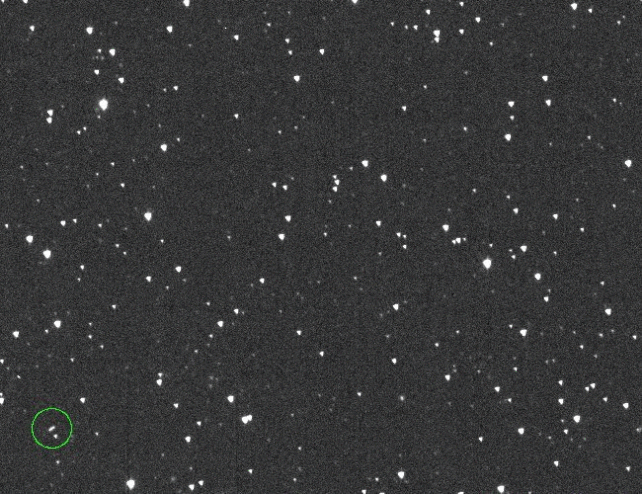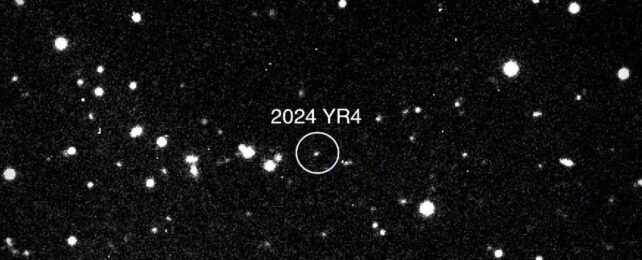Just when you thought you could relax about putative 'city killer' asteroid 2024 YR4, back it comes, with a vengeance.
Don't worry – it's still not a danger to Earth for the time being. When we last checked in, odds of a collision between 2024 YR4 and Earth were at just 0.001 percent, far too low to be considered potentially hazardous, and that's where it remains.
So we're in the clear. That's great. The Moon, though? The Moon might still be in the asteroid firing line.
According to a report led by planetary astronomer Andrew Rivkin of Johns Hopkins University, 2024 YR4 has a small chance of smacking into the Moon when the asteroid next flies close to Earth in December 2032.
"While an Earth impact by 2024 YR4 on December 22, 2032 has now been ruled out," the researchers wrote in a preliminary report, "it continues to have a non-zero probability of impacting the Moon at this time."

What does this mean? At the moment, we don't really know. Further JWST observations of the rock are planned for May 2025; hopefully they will help narrow down the odds of a collision with the Moon, and the potential effect – if any – it would have on Earth.
In a more comprehensive report published in the Research Notes of the AAS, the researchers laid out the full details of their observations.
The asteroid was only discovered for the first time on 27 December 2024, and rapidly rang alarm bells. Its projected trajectory around the Sun brought it close enough to Earth to pose a hazard; at their highest, estimates of an impact in 2032 rose to 3.1 percent, which may not seem very high, but it's high enough to pose a huge problem.
Continued observations and furious calculations restored normalcy, dropping the odds down to practically zero, and everyone breathed a huge sigh of relief. However, we still need to know more about the asteroid; it's going to continue to fly past Earth as it flies around the Sun, and we need as much observational data as possible to predict its ongoing course.
As YR4 receded and grew fainter, scientists recruited JWST to take measurements.
According to a measure of light reflecting off 2024 YR4, Rivkin and his colleagues determined that the asteroid is about 60 meters (197 feet) across. This is consistent with previous measurements, and confirms that the asteroid is large enough to be a significant danger if it were going to hit us.
JWST also measured a range of wavelengths emitted by 2024 YR4 that could be used to determine how reflective it is. While we can't be certain, the analysis could not rule out an asteroid with a rocky composition. If this is the case, the researchers calculated, an impact with Earth would release energy between 2 and 30 megatons of TNT, creating a blast radius up to 80 kilometers.
The most powerful nuclear bomb tested by the US, for context, released 15 megatons of energy; and the Tunguska event, a meteor airburst that flattened a Siberian forest, is thought to have released about 15 megatons also.
Luckily, we don't have to fret about any of this for Earth from YR4 for now.
Nevertheless, we haven't heard the last from YR4. In addition to the planned observation in May, another observation opportunity is going to arrive in 2026, allowing scientists to further narrow down its orbit and composition.
Fingers crossed that it's going to be good news for the Moon.
The report has been published in the Research Notes of the AAS.
